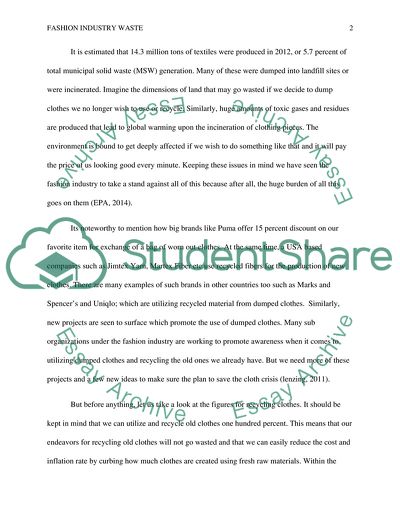Cite this document
(“Fashion industry waste Research Paper Example | Topics and Well Written Essays - 2000 words”, n.d.)
Retrieved from https://studentshare.org/visual-arts-film-studies/1639285-fashion-industry-waste
Retrieved from https://studentshare.org/visual-arts-film-studies/1639285-fashion-industry-waste
(Fashion Industry Waste Research Paper Example | Topics and Well Written Essays - 2000 Words)
https://studentshare.org/visual-arts-film-studies/1639285-fashion-industry-waste.
https://studentshare.org/visual-arts-film-studies/1639285-fashion-industry-waste.
“Fashion Industry Waste Research Paper Example | Topics and Well Written Essays - 2000 Words”, n.d. https://studentshare.org/visual-arts-film-studies/1639285-fashion-industry-waste.


